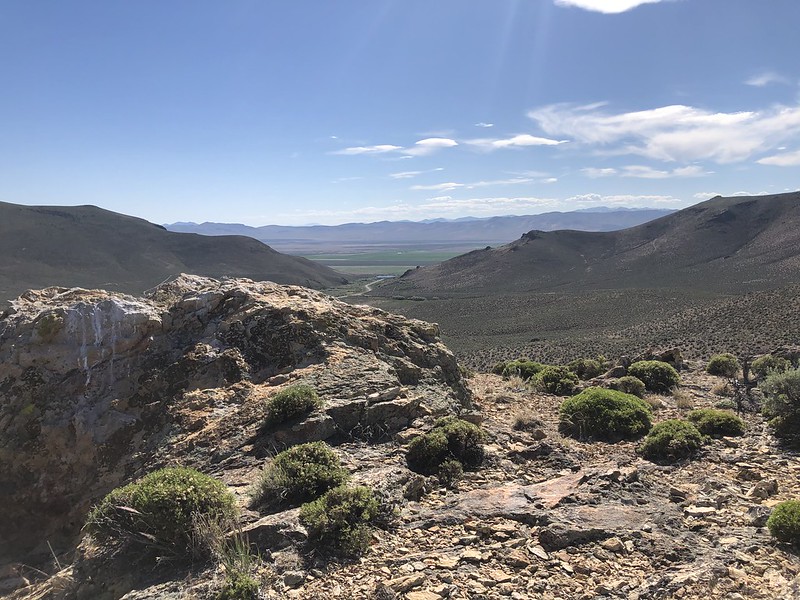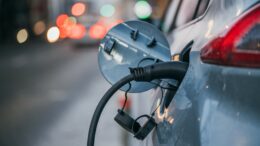Manufacturers, governments and consumers are lining up behind electric vehicles — with sales rising 60% in 2022, and at least 17 states considering a California-style ban on gas cars in the years ahead. Scientists say the trend is a key part of driving down the transportation sector’s carbon emissions, which could fall by as much as 80% by 2050 under aggressive policies. But while EVs are cleaner than gas cars in the long run, they still carry environmental and human-rights baggage, especially associated with mining.
“If you want a lot of EVs, you need to get minerals out of the ground,” says Ian Lange, director of the Energy and Economics Program at the Colorado School of Mines.
That’s because manufacturing EVs requires about six times more minerals than traditional cars. That requirement — coupled with growth in consumer electronics and renewable energy infrastructure — will double global mineral demand over the next two decades, according to the International Energy Agency.
And that’s only under current trends. The IEA says meeting the Paris Climate Accord goals for decarbonization will require even more — far more — minerals: as much as four to six times present amounts.
That will mean a lot of mining, with much of it for EV batteries. And at least some of it will happen in the United States, as the Biden administration and many Republicans want more EV materials sourced at home, both to act on climate change and to wrest some control of supply chains from China.
Lange, who served as an economic advisor in the Trump administration, says it will be a big change for the country, which “got out of the minerals game” in recent decades. And it will bring challenges — including obtaining permits for minerals development, developing the needed workforce, and building processing capacity. The Biden administration hopes that funding from the landmark Inflation Reduction Act and other sources will help overcome these obstacles.
But the rush for renewables will also bring another big hurdle: environmental impacts. Already, as the search for EV materials ramps up, Tribes, landowners and communities find themselves wrestling with the not-so-green side of green energy.
Environmental Considerations
For a sense of things, consider cobalt. About 30 pounds of it go into each EV battery to boost performance and energy storage, which are key to luring consumers from dirtier gas cars. But today 70% of cobalt comes from the Democratic Republic of Congo, where an estimated 40,000 children as young as 6 work in dangerous mines. The mines also bring deforestation, habitat fragmentation and high carbon emissions from mining and refinery processes that rely heavily on fossil fuels to produce electricity and drive heavy machinery. Some sources say cobalt mining’s CO2 emissions could double by 2030.
EV boosters are eager to put mileage between their products and human rights abuses, which fuel Republican and oil industry criticisms of battery power. Although efforts are underway to improve overseas practices, another way to tackle the issue would be to mine cobalt in the United States, which would also increase domestic sources of EV materials. But today the country has only one cobalt mine, and building others would likely raise environmental concerns.
Lange says that’s certainly the case in Alaska, where copper and cobalt rest beneath rolling tundra in the Ambler district south of the Brooks Range. Accessing it would require a 200-mile road through traditional Alaska Native lands, caribou habitat and Gates of the Arctic National Park, with gravel quarries dug every 10 miles. It’s something state leaders support but state and national environmental groups and several Indigenous communities oppose. Permitting for the road began during the Obama administration and was approved under Trump, but it’s now under reconsideration by Biden.
According to Lange, such regulatory sagas breed uncertainty within the minerals industry that slows investment in the minerals needed for EV batteries. He offers up the Twin Metals Mine near Minnesota’s Boundary Waters Wilderness as another example. Here the target is nickel, another important EV metal mined in only one U.S. location. In a political tug-of-war, the mine’s long-held leases were denied renewal by Obama, reinstated under Trump, and then canceled under Biden.
In both cases, concerns over compliance with the Clean Water Act, Endangered Species Act and National Environmental Policy Act led to lawsuits and claims of rushed environmental analysis. Lange says these bedrock environmental laws have improved air quality and human health conditions in the United States, but at the same time they may also contribute to the lag in sustainable production of EV materials.
“When we restrict access to natural resources, these international companies can choose to go elsewhere,” he says — often to countries with lax environmental and human rights laws.
The tension between environmental protection and renewables development is becoming a bigger and bigger issue. Adam Bronstein of Western Watersheds Project sees it in northern Nevada, where his group has joined a lawsuit against a proposed open-pit lithium mine in Thacker Pass, an area of remote desert that’s home to sage grouse, antelope, Lahontan cutthroat trout and other sensitive species, including some only found locally. It also holds hundreds of Native American heritage sites that remain important to Tribes today.

“It’s a very remote and undeveloped landscape, where the stars are still bright and the air is quiet,” he says.
Bronstein says the West is quickly losing such landscapes to development, including large-scale solar projects and renewable energy mining. At Thacker Pass, for instance, the lithium mine would entail a 2-mile-long open pit with waste ore, acid dumps and massive water usage. Like opponents of Alaska’s Ambler Road, some also worry it would open access to additional claims, spreading impacts to further wildlands.
Mine proponents say Thacker Pass lithium could support more than a million EVs annually and would add jobs and tax revenue.
Bronstein questions the notion that ecologically valuable areas must be sacrificed for climate goals. Others agree, including a rising chorus who say solar and wind development in Nevada and California are eliminating vast areas of wildlife habitat, contributing to biodiversity loss worldwide.
As a judge considers the Thacker Pass lawsuit, nearly 2,000 miles away, residents of Coosa County, Alabama, express similar concerns over plans to mine graphite, an EV mineral not currently produced in the United States.
“It’s going to be a mess,” says Chris DiGiorgio, a lifelong resident of the area and a board member of Coosa Riverkeeper, which protects, promotes and restores the Coosa River.
DiGiorgio says graphite mining will level forest, disrupt hydrology, and leave chemical pollution that could last generations. Yet he also acknowledges the need for minerals to support renewable energy.
“We all want to stop climate change,” he says.
Still, DiGiorgio feels that state officials unjustifiably fast-tracked the mine’s permits, and he questions whether graphite demand will still be high by the time mining starts in 2028. But whereas Western Watersheds Project is fighting the Thacker Pass mine, Coosa Waterkeeper appears settled into guarded acceptance and a commitment to playing a watchdog role over the mine.
Navigating the Transition
Josh Johnson with the Idaho Conservation League has taken yet another approach. As Australia-based Jervois Mining prepared to open the United States’ only cobalt mine in Idaho’s Salmon River Mountains, he helped secure $150,000 in annual funding from the company for local conservation work — money that can also be leveraged to help secure matching funds from state and federal grants. Two years in, the funding has helped restore overgrazed streambanks and supported acquisition of vital fish habitat. Each year, the organization determines where the funding goes, with input from Tribes, agencies and others.
Johnson says that the cobalt mine connects to the league’s conservation goals, which include promoting renewable energy and adopting EVs. And while he recommends that environmental groups take a nuanced look at such mines, he stresses that his partnership doesn’t compromise Idaho Conservation League’s watchdog role as mining gets underway.
But it’s also important to consider what happens after Idaho’s cobalt meets daylight. With no processing plants in the United States, it will be shipped to Brazil, then to China for manufacturing, and eventually back to the United States tucked inside a new EV battery.
Generous incentives for EVs in the Inflation Reduction Act aim to tighten that supply chain — and ease reliance on strategic adversaries like China to reach U.S. climate goals. They join funding from the Bipartisan Infrastructure Bill, the Defense Production Act and other sources in a strategy that aligns with IEA recommendations for diversifying global mineral sources. And while this all-in approach on industrialization raises biodiversity and other concerns, it could move the United States closer to reaching Paris Climate Accord goals and the Biden administration’s target to cut economy-wide carbon emission by 50% below 2005 levels by 2030.
BREAKING NEWS: USPS Intends To Deploy Over 66,000 Electric Vehicles by 2028, Making One of the Largest Electric Vehicle Fleets in the Nation. https://t.co/7N6GpTkFlt pic.twitter.com/6rPiBHSrh9
— U.S. Postal Service (@USPS) December 20, 2022
Lange agrees the funding will boost research, development and processing capacity, but he questions whether it moves the needle on EV mineral production in the United States.
Inevitably, technology should resolve some of the issues surrounding EVs. Scientists worldwide are tinkering with EV batteries to improve efficiency and replace problematic metals like cobalt, nickel and perhaps even lithium. Other research highlights better ways to mine, including by salvaging EV materials currently discarded as waste at existing mines. This is happening at a Rio Tinto mine in California’s Mojave Desert, which has long produced minerals for soaps and cosmetics but is now also pulling lithium out of its old tailings.
Lange says advances in recycling may also help. The IEA anticipates a surge in recyclable minerals as first-generation EVs reach the end of their lifespan, perhaps meeting 10% of demand by 2040. It could help ease shortages, stabilize prices, diversify sources, and chip away at harmful mining, including deep-sea mining in sensitive ocean ecosystems. Yet as with everything else related to EVs, Lange says the United States lags behind China and other countries in recycling research, development and capacity.
To Bronstein and others, placing solar at already developed areas like canals and parking lots and developing smarter cities that disincentivize driving will also remain important strategies for adopting clean energy in ways that minimize impacts on undisturbed wildlands.
Cities and the federal government can also shape strategic adoption of EVs by working to replace fleet and transit vehicles first. This recently happened in Antelope Valley, California, where the local transit authority became the first in the country to replace its fleet of diesel buses. Since its 87 new electric buses, vans and coaches are cheaper to operate and maintain than dirtier diesel buses, the city is now using the savings to expand public transit and build a solar field to power the fleet. Similarly, in December the U.S. Postal Service committed to buying at least 45,000 electric delivery trucks and to explore how to electrify its entire fleet.
The approaches replace the vehicles that log the most miles first, rather than relying on individual drivers to adopt EVs.
Whatever path it takes, says Bronstein, “the renewable energy future is coming.”
Scientists, activists and other experts have spent decades advocating for this change, even as the dangers of burning fossil fuels have increased. The future has finally started to arrive. But as Bronstein reminds us, making the transition to cleaner fuels still requires careful planning and restraint to protect our already beleaguered biodiversity and other natural resources.
Previously in The Revelator:
Will the Race for Electric Vehicles Endanger the Earth’s Most Sensitive Ecosystem?
![]()


